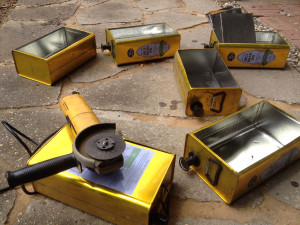 Principle 12: Creatively use and respond to change
Principle 12: Creatively use and respond to change
Do it Yourselfer #15

Many people would be surprised to hear that electric cars have been around for a very long time. The first production electric car was designed in London by Thomas Parker and built in 1884. A fleet of electric powered taxis was in operation in the city by the end of the century. They were quite popular in the early part of the 20th century. They were to easy start, drive and provided a smooth, clean and quiet ride.
With the discovery of large amounts of oil, Henry Ford’s mass manufactured Model T and the improved road networks, petrol powered cars came into favour from about 1910 onwards.
The desire to reduce emissions and dependence on limited resources has brought about a resurgence in interest in the electric vehicle. Improvement of battery technology, and the reduced costs, is running in tandem with increased renewable energy production.
Beyond Zero Emissions have proposed that all small vehicles should become electric within 10 years, as a part of the approach to avoid catastrophic climate change. But do these vehicles need to be new, or can we retrofit our existing vehicles?
The conversion of a Morris 1100

Retired engineer Neil Harris retrofitted his 1967 Morris 1100 back in 1978, and with some modifications over the years it continues to run well today. He chose the Morris to convert because of it’s compact size and it being a front wheel drive.

The original design for his conversion took him a day, but another month to simplify. A lot of thought went into how to improve the efficiency of the transmission of power.
The basis of the design uses a double row roller chain, similar to a bike chain, that connects the electric motor to a sprocket welded to the differential which drives the front wheels. The chain is enclosed in a case with lubricant, to ensure a long life. A speed controller sits neatly above the motor.

As the car no longer requires a gearbox, fuel tank or engine, there’s room for two batteries in the engine bay, and another nine in the boot (one for ancillaries). A total of 10 batteries run the motor at 120 volts. Shock absorbers have been altered to take into account the extra weight of the batteries.
The high quality deep cycle lead acid that Neil uses have a life span of about two and a half years, cost about $1200 to replace and give a range of about 40km when new. Perfect for town use. A change over to the lighter lithium-ion batteries is an option, but the extra cost and effort isn’t considered worthwhile at this stage.

The dash includes the addition of a volt and amp meter, to keep an eye on energy use and availability, as well as a lever that changes the direction from forward to reverse. Other than the fact that there are no gears, there is little to differentiate the interior from the original.
As the car’s basic structure or function hasn’t been modified, it met the standards and passed the inspections without any trouble.
The charging system that Neil developed has caught the attention of many enthusiasts. The car drives into it’s charging point, and reverses out without plugs or leads. A visual guide assists the driver to line up, and a wheel guide and bumper plate ensures the forks join in place. This connects the car to a transformer and rectifier that charges the batteries. Neil sets this on a timer, but it could be left on without ill-effect.

Driving the car isn’t much different from driving any car, it’s got good acceleration and a top speed of 100kph. The buzzing sound as it starts off reminds me of a tram, it runs very quietly once it get going, so it’s important to watch out for pedestrians who are often caught unaware. Sensible driving ensures a long life for the batteries, avoiding unnecessary braking and speeding up a little before inclines is advised.
With advances in technology, electric vehicle (EV) support networks and plenty of suitable cheap cars, retrofitting an existing car to become and electric one is a realistic option. Neil’s advice? “If you really want to do something, you can do it.”
All the best – Richard Telford




